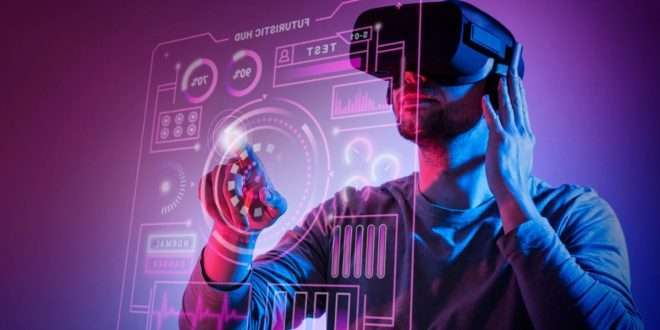Virtual reality (VR) has taken giant leaps forward in recent years, and the metaverse has emerged as a fascinating realm for innovation and experimentation. Among the various techniques used to optimize user experiences in the metaverse, A/B testing stands out as a powerful tool. In this blog, we delve into the world of A/B testing, exploring its significance in the virtual reality landscape and how it enables developers to create immersive experiences that captivate users.
Understanding A/B Testing in the Metaverse
A/B testing, also known as split testing, involves comparing two versions of a design or element to determine which one performs better. In the context of the metaverse, it allows developers to make data-driven decisions that enhance user engagement, interaction, and overall satisfaction. By dividing users into different groups and exposing them to different versions of a VR experience, A/B testing provides valuable insights into what works best and what needs improvement.
The A/B Testing Process
Identifying the Variables
Before conducting A/B testing, developers need to pinpoint the variables they want to test. These can include elements like user interfaces, interactive objects, navigation methods, or even the entire virtual environment. By focusing on specific variables, developers can gather targeted data to improve the VR experience effectively.
Creating Control and Treatment Groups
Once the variables are identified, developers divide users randomly into two groups: the control group and the treatment group. The control group experiences the current version (the control) of the VR environment, while the treatment group experiences the new version, which incorporates the changes being tested.
Collecting Data
During the A/B testing phase, developers gather data on user behavior, interaction patterns, and feedback. This data helps in assessing the performance of each version and drawing meaningful conclusions.
Analyzing the Results
After the data collection, developers analyze the results to determine which version performed better. By comparing metrics such as user engagement, time spent in the environment, or completion rates, they gain insights into the strengths and weaknesses of each version.
The Significance of A/B Testing in VR
User-Centric Design
A/B testing enables developers to prioritize user preferences and expectations. By testing different design elements, they can tailor the VR experience to meet the needs of the audience, leading to higher satisfaction and increased user retention.
Iterative Development
In the dynamic world of the metaverse, constant iteration is essential. A/B testing facilitates a data-driven approach to development, allowing developers to refine and enhance their creations over time, ensuring that VR experiences remain fresh and captivating.
Optimizing Performance
Through A/B testing, developers can identify performance bottlenecks and optimize their VR environments for better loading times, smoother interactions, and overall improved performance.
Reducing Development Risks
By testing changes on a smaller subset of users before implementing them universally, A/B testing minimizes the risk of introducing potential issues to a broader audience. This risk reduction approach helps maintain a positive user experience.
How to Conduct A/B Testing in the Metaverse
Define Clear Objectives
Before starting A/B testing, establish clear objectives for what you want to achieve. Whether it’s improving user engagement, increasing conversion rates, or enhancing navigation, having defined goals will guide your testing process.
Selecting the Right Tools
Choosing the right A/B testing tools is crucial for accurate and reliable results. Several VR-specific platforms and tools are available to help developers conduct A/B tests effectively.
Focus on Simplicity
In the metaverse, simplicity often translates to better user experiences. Keep your A/B tests simple and focused on one or a few variables at a time to avoid overwhelming users and gathering precise data.
Analyze User Feedback
In addition to quantitative data, qualitative user feedback can provide valuable insights into user preferences and pain points. Incorporate user feedback into your analysis to gain a holistic understanding of the VR experience.
Final Words
A/B testing in the metaverse is a groundbreaking approach to crafting virtual reality experiences that resonate with users. By harnessing data-driven insights, developers can iterate, optimize, and refine their VR environments, ultimately paving the way for even more immersive and captivating adventures in the metaverse.
Commonly Asked Questions
-
Q: How long does an A/B testing phase typically last in VR development?
A: The duration of an A/B testing phase can vary based on the complexity of the changes being tested and the number of users involved. However, it is generally advisable to run tests for at least a few days to gather sufficient data for analysis.
-
Q: Are there any potential drawbacks to A/B testing in VR?
A: While A/B testing offers valuable insights, it’s essential to remember that user preferences can be subjective. Overreliance on data may lead to overlooking certain qualitative aspects that users value.
-
Q: Can A/B testing be conducted on different VR platforms simultaneously?
A: Yes, A/B testing can be conducted on various VR platforms simultaneously. However, it’s crucial to ensure consistency in the testing process and variables across all platforms to obtain accurate results.
-
Q: What if both versions in the A/B test perform equally well?
A: If both versions perform equally well, it might indicate that the variables tested do not significantly impact user experience. In such cases, it’s essential to reassess the variables being tested or consider more substantial changes.
-
Q: How frequently should A/B testing be conducted for VR experiences?
A: The frequency of A/B testing depends on the development cycle and the rate of changes being introduced. As a general rule, A/B testing should be conducted whenever significant updates or changes are implemented in the VR environment.
 webfily
webfily



